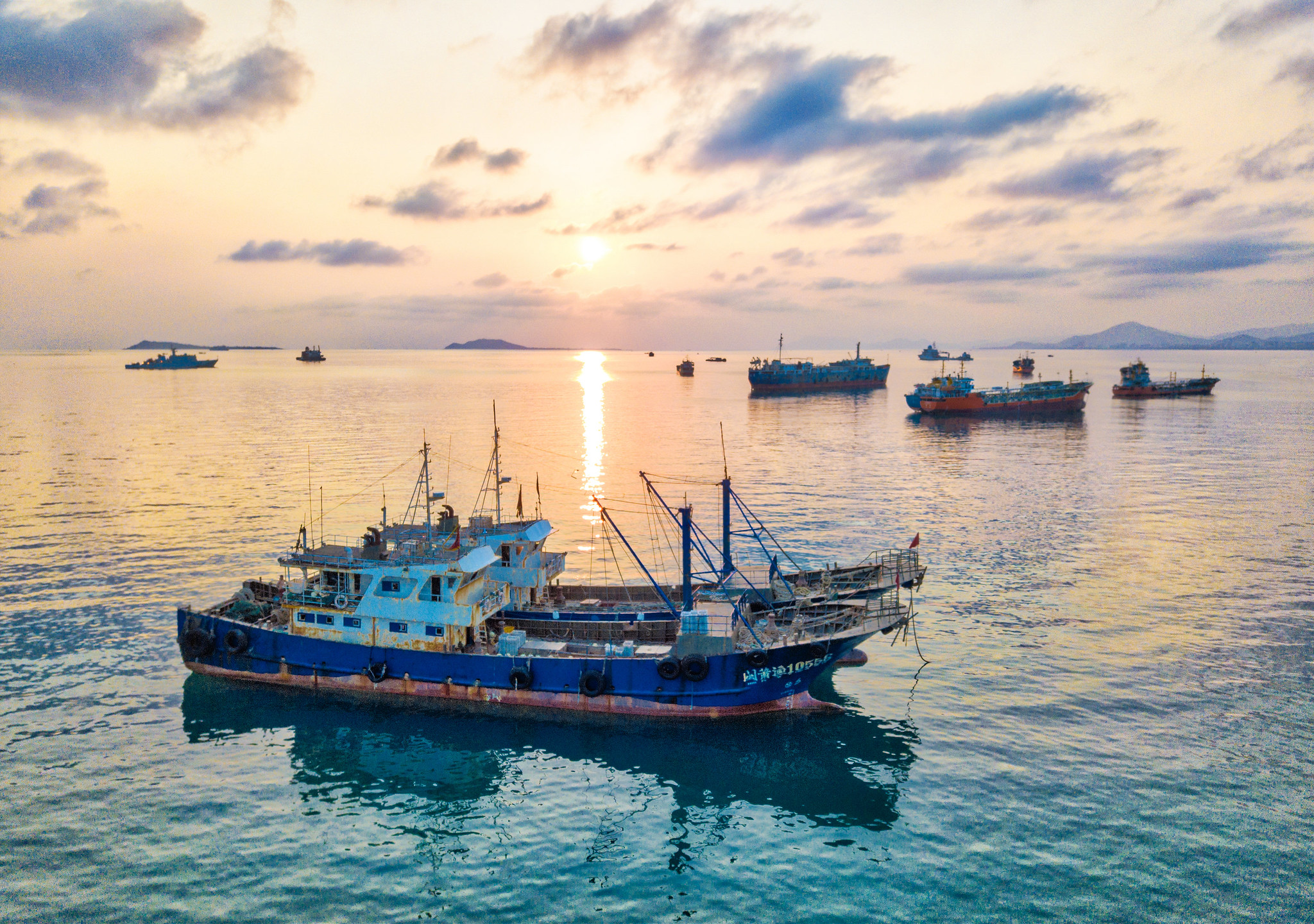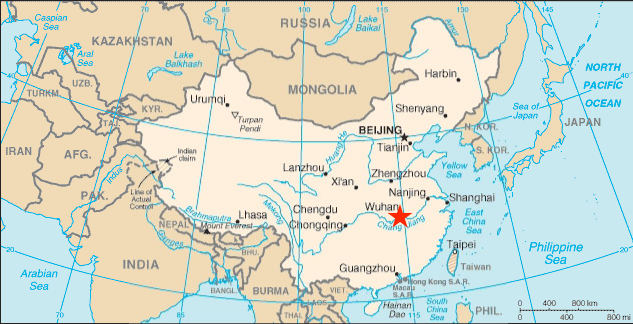CEIAS and IIR joint interview conducted by Alfred Gerstl (AG) and Rudolf Fürst (RF) with Bill Hayton, an Associate Fellow with the Asia-Pacific Programme at Chatham House.
AG: The territorial and maritime disputes in the South China Sea involve five ASEAN members – Brunei, Indonesia, Malaysia, the Philippines and Vietnam – as well as China and Taiwan. The latter two have an unspecified claim to islands and other rights in a wide area of the South China Sea, illustrated by the so-called nine-dash or U-shaped line marked on maps. ASEAN (the Association of Southeast Asian Nations) has been attempting to negotiate a Code of Conduct with China since 1996 but so far both it, and the disputes, remain unresolved. Mr. Hayton, can you provide us a brief overview of the most current events in the South China Sea?
Bill Hayton: When researching current developments in the South China Sea, by-and-large we only hear what the involved governments want to tell us. However new technology, including satellite images and ship-tracking data, has given us new tools to understand what is going on.
Right now, in September 2018, there are currently two areas of confrontation: one between China and Vietnam in an area known as the ‘Vanguard Bank’, and the other between China and Malaysia of the coast of Sarawak. Both areas lie within the respective Exclusive Economic Zones (EEZ) of Vietnam and Malaysia. China’s foreign minister, Wang Yi, reportedly told his colleagues from ASEAN that China regards these areas as “disputed” but he did not explain the legal basis of China’s claim to these areas of sea.
In early May 2019 a drilling barge operating on a Malaysian license started drilling for oil off Sarawak near a group of coral reefs known as the Luconia Breakers. About a week later, one particular Chinese Coast Guard vessel, Haijing 35111, arrived at the scene. A few days later, it started to harass the drilling barge and its supply vessels. In mid-June the same ship moved to the Vanguard Bank and began to harass the Vietnamese gas-drilling operation taking place in an area of sea known as Block 06-01. Since then Chinese survey ships, guarded by coastguard and militia vessels have undertaken seismic surveys within the EEZs of Vietnam and Malaysia.
Vietnam’s offshore drilling plans have come under Chinese pressure before. Sources in the oil industry have told me that in both 2017 and 2018 the Chinese government threatened Vietnam with consequences if it allowed the Spanish energy company Repsol to drill at the very edge of the country’s claimed Exclusive Economic Zone. Both drilling operations were canceled. There are currently rumors about whether ExxonMobil will withdraw from a massive gas project known as ‘Blue Whale’ off central Vietnam. The field is supposed to provide energy for Hanoi for 20 years. It lies within 50 nautical miles of the Vietnamese coast, close to Da Nang, and just outside China´s nine-dash line. The rumours are unconfirmed, however, and if Exxon does exit Vietnam, the reasons are likely to be more commercial than political, in my view.
AG: Recently, also new tensions between China and the Philippines occurred – despite President Duterte´s overall friendly relations with Beijing.
The Philippines faces a major problem. Malampaya, its largest gas field from which it generates a fifth of its total electricity supply, is expected to begin running out in 2024 or shortly thereafter. There is known to be a replacement field under the Reed Bank, further from the Philippines coast. The problem is that China has asserted a claim to this field, although, again, without providing any legal basis. In May 2017, President Duterte said publicly that President Xi had personally said there would be ‘war’ if the Philippines tried to develop the Reed Bank gas without China’s agreement.
In November 2018 the Philippines and China signed a Memorandum of Understanding on ‘jointly’ developing the gas field. However it is still not clear whether the Philippines is offering real ‘joint development’ in which sovereign rights are shared between the two countries, or simply a ‘joint venture’ which is a commercial arrangement between two companies, operating under Philippines law. China wants ‘joint development’ but that would violate the Philippines’ constitution and laws on national resources. It is not clear if the differences can be bridged. Discussions are currently ongoing.
AG: What are the objectives of the People´s Republic of China in the South China Sea?
China’s interests in the South China Sea emerged at the beginning of the twentieth century and its territorial claim developed during particular crises in 1909, 1933 and 1946. To begin with, its interest was in claiming the small islets as parts of its national territory. Some officials had hopes that they might be economically rich but ‘emotional’, patriotic feeling was a stronger reason for pursuing the claims. It was not until the 1970s that governments became aware that there might be oil and gas fields all around the edges of the South China Sea. That led to renewed interest in China, which occupied features in the Spratly Islands for the first time in 1988. While territory and resources are still a key motivation behind China’s actions, another one has emerged since the development of China’s nuclear-powered ballistic missile submarines. It seems increasingly likely that China wishes to construct a safe ‘bastion’ in which to hide its nuclear deterrent.
AG: What kind of strategy does China pursue?
Such a ‘bastion’ strategy requires near-exclusive control of the central South China Sea, and therefore the ejection of other claimants and outside navies. This is why many people think that China wants to build another artificial island on the Scarborough Shoal, which lies around 200km off the Philippine island of Luzon. This would form the third point of a ‘strategic triangle’ that would enable China to project power over the entire South China Sea. This strategy would also require guaranteed electricity supplies on the island bases to provide power for desalination and high-powered computing, not least for anti-submarine warfare (ASW). This may be why we are seeing Chinese media discussing the development of floating nuclear reactors. Their deployment would also be a deterrence against military actions: who would want to risk bombing a nuclear reactor?
I see a very bumpy future ahead, as the United States and Japan insist on maintaining their presence in the sea and their rights to Freedom of Navigation through it and refine their submarine-hunting skills.
AG: What role can ASEAN play in resolving or at least mediating the South China Sea dispute?
Five ASEAN states are directly involved in the South China Sea disputes: Brunei, Indonesia, Malaysia, the Philippines and Vietnam have all had differences with China over maritime resources. Singapore is also concerned about anything that might disrupt regional trade and the rule of international law. The other four ASEAN states are less interested in the issue and Cambodia, in particular, has become, in effect, China’s proxy in the organisation on South China Sea matters. One might say that Cambodia is to ASEAN what Hungary is to the European Union! In recent years, Cambodia has prevented a strong consensus emerging within ASEAN on the South China Sea. What makes things more complicated is that the Southeast Asian claimants have failed to resolve all their maritime disputes with each other. If they did so, they would be in a much stronger position in presenting a united face to China.
During 2020 Vietnam will become the ASEAN Chair and will likely push ahead with the South China Sea issue, trying to promote a consensus on the Code of Conduct. Another objective might be to get the approval for further ASEAN naval exercises with the US. China may stick it out during Vietnam´s chairmanship and wait for the next, more China-friendly presidency. All in all, we cannot expect major changes of ASEAN´s influence as an actor in the South China Sea.
AG: In your view, how can the dispute in the South China Sea be resolved?
The status quo in the South China Sea is not such a bad situation. There is some stability, at least in terms of the territorial disputes. China’s military power relative to the Southeast Asian claimants is overwhelming. The question China’s leaders must answer is whether they intend to use that power to advance their territorial claims. The Southeast Asian claimants lack this military option but, more importantly, they have made it clear that they have no intention of trying to drive other states off the islets and reefs that they current occupy. China should do the same.
To resolve the dispute, the tools of international law are available. In 2008, the International Court of Justice was able to decide the ownership of disputed land features in the Strait of Singapore. Relying on historic evidence, it ruled that Pedra Branca, where Singapore built a lighthouse, belonged to Singapore, and the Middle Rocks to Malaysia. These two features are only one kilometre apart. The South China Sea is no more difficult legally but none of the claimants are willing to have their territorial claims tested in an international court.
I would argue that, overall, China´s wider strategic interests lie in peaceful and stable relations in its neighbourhood and that those interests are damaged by its pursuit of its disputed territorial claim. It would gain better relations with Southeast Asia if it made clear that it is willing to compromise on the territorial disputes. Put simply, if every claimant agreed to keep the features that they currently occupy and suspend their claims to the others, the situation could be resolved relatively quickly.
RF: What’s your opinion about the militarization of the South China Sea?
Well, when this word militarization was originally used it had a very specific meaning. It referred to China’s new islands, the seven islands that it created in the southern part of the South China Sea, in the Spratlys. So Xi Jinping’s commitment was not to militarize those new features. But since then, we have seen certain kinds of military equipment put there, missiles and so forth. The argument then is how you define militarization. The Chinese would say, “we’ve installed defensive systems there and we don’t consider that militarization”. The Southeast Asian militaries, who now find themselves within range of those missiles would disagree of course, as would the Americans and Japanese. Of course, the South China Sea as a whole is militarized in the sense that you see naval ships going through and military exercises and all this kind of thing.
The one thing that we haven’t seen yet is Chinese attack aircraft based on the newly-built runways. Everything seems to be there ready for that to happen – but it hasn’t happened yet. It would be a major step if China did that.
RF: At any rate the space of the South China Sea is an urgent security issue. Do you believe that European Union should adopt any joint attitude or any joint statement?
I think there are various ways I think that this affects the EU’s interests. The big question, which unfortunately is rather vague, is that the situation in the South China Sea threatens to undermine the rules-based international order. The EU is fundamentally a rules-based organization: it looks for fairness and openness in the way states deal with each other. All the states involved in the South China Sea disputes have ratified the UN Convention on the Law of the Sea (UNCLOS) and yet we see China’s recent behavior towards Vietnam and Malaysia apparently infringing those other country’s rights under UNCLOS. So I think it is important for the EU to step up go beyond just say that they support UNCLOS and that disputes should be resolved in line with UNCLOS. I think they should now call out the states that are actually violating UNCLOS, and in this case it really is China. I don’t have any expectations that the EU collectively is going to, for example, organize some sort of naval or coastguard presence in the South China Sea, although I think some individual member states might do that. But I think there are ways that the EU could take a view on which claims to energy and fish resources in the South China Sea are legitimate and help coastal states to manage those resources. It might even be interested in having some kind of observation mission that would publicize violations of UNCLOS. I think the EU needs to recognize that, in lots of ways, it is already involved. It buys a lot of fish from these countries and it needs to think about the sustainability of those fish stocks, what is being done to manage and protect them. It does a lot of trade with the region and its commercial vessels sail through the sea. Many European states, UK, France and the Netherlands for example, have long standing historical ties with these countries. So Europe is already involved in this part of the world. The general maintenance of international peace and stability requires the EU to keep an eye on what is happening there.
Cover photo: Trey Ratcliff/Flickr, CC BY-NC-SA 2.0







